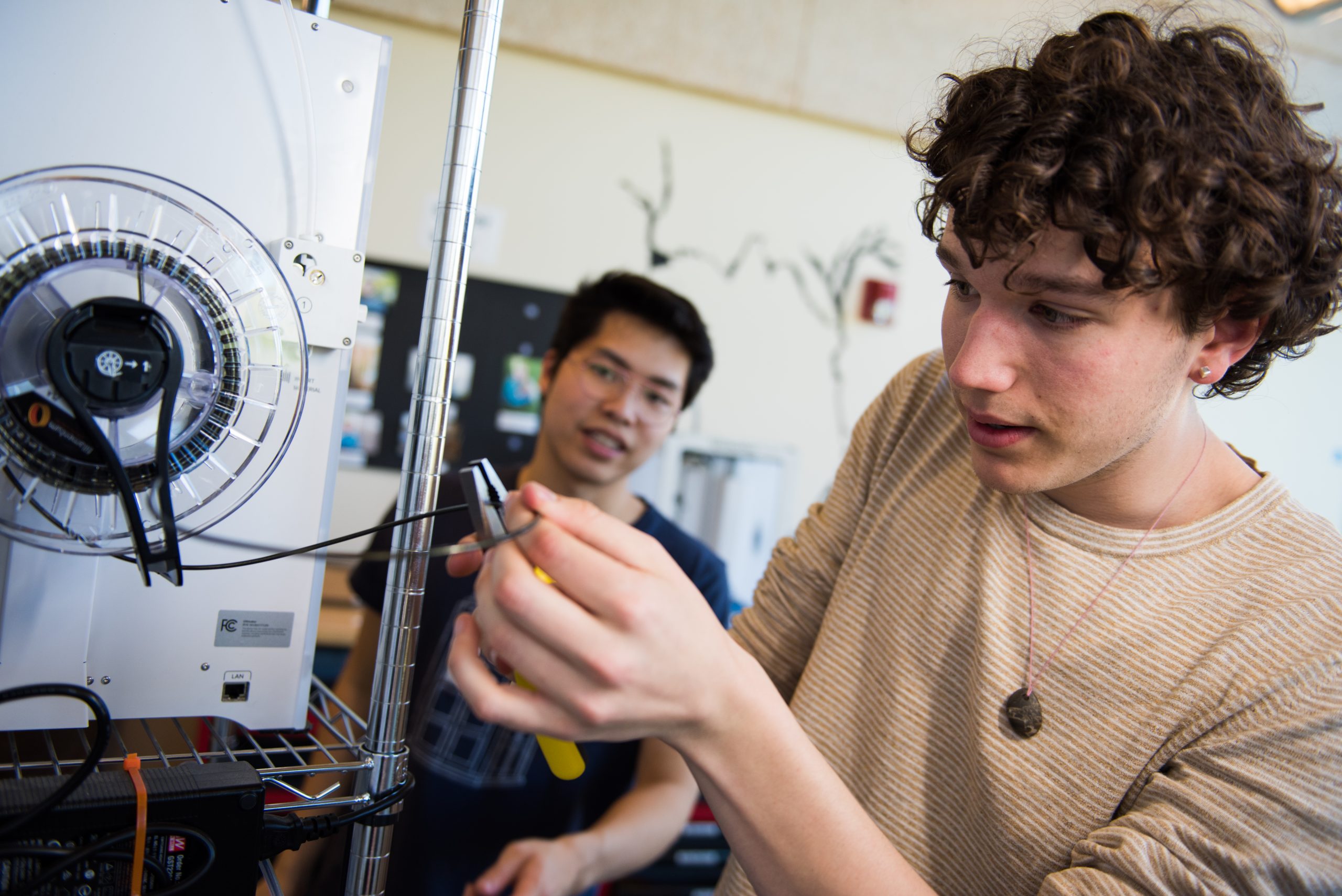Innovation Sandbox Reopens for Entrepreneurial Student Projects

The Innovation Sandbox is an on-campus space that provides students with access to the latest prototyping and ideation tools. It was closed at the start of the current COVID-19 pandemic, but with their COVID-safe reopening on Jan. 25, the student-run organization now hopes to resume its role as a creative hub for the Cal Poly community.
The space, equipped with cutting edge technologies like 3D printers and laser- and vinyl-cutters, fuels creativity and allows students to explore the power and possibilities of innovation.
“We function as a sort of makerspace,” Innovation Sandbox student director Hailey Casino said.
The Innovation Sandbox has reopened with limited capacity and a new safety protocol that has been approved by both the Cal Poly College of Engineering and the university itself. Per this new protocol, no more than one person at a time is allowed within the Sandbox and access to the resources is limited to students participating in approved on-campus activities.
“We’ve been granted approval for limited opening in support of in-person classes and research that has in-person approval,” Tom Katona, faculty director of the Innovation Sandbox, said. “Our operations through the end of this academic year will be in support of these limited activities.”
While select students are able to utilize its resources, they are not permitted to enter the Innovation Sandbox to maximize safety.
“We’ll have a limited number of Innovation Sandbox officers who will be allowed to run the printers,” Casino explained. “Students who are taking in-person classes will be able to use our services, but they will have to submit parts to us. We’re not going to have any students coming into the room.”
Although the Innovation Sandbox is limited to students with in-person classes, it is open to students of all majors.
“Bringing students from across campus together is hard,” Katona said. “Our intentionality about this helps bring creative, innovative and entrepreneurial students together, but it still requires outreach and students that want to collaborate and learn from others with backgrounds different from their own. We learn more about this each year, and I don’t expect this to change anytime soon.”
The regulations necessitated by the COVID-19 pandemic do pose obstacles for the Innovation Sandbox team. Their reopening requires minimal interaction between students, making it difficult to unite students from across campus or recreate the comfortable, collaborative environment that the Innovation Sandbox fostered prior to the pandemic.
“Many places for prototyping are intimidating and that’s what keeps students from starting projects they are thinking about,” Katona said. “This is much more difficult in our COVID-19 operating restrictions, but our goal is for students to want to use [the Innovation Sandbox] without feeling intimidated.”
Despite the limitations, however, Casino is excited for the reopening of the Innovation Sandbox.
“I’m looking forward to reopening as much as we can and getting things up and running — being able to help students and see the impact we make,” she said.
Casino, a fifth year biomedical engineering major, worked with the Innovation Sandbox as an officer prior to being appointed student director at the start of this academic year.
“I just became student director at the beginning of this quarter, so I haven’t been able to do a lot of the normal tasks that student directors do,” she said. “But I was an officer last year, so I was pretty involved with the way the [Innovation Sandbox] was being run.”
In her time as student director, she has been heavily involved in developing the Innovation Sandbox’s new safety protocol and coordinating communication efforts to promote the upcoming reopening. Her favorite aspect of working with the Innovation Sandbox, however, is not the administrative work, but watching students use Innovation Sandbox resources in creative, inventive ways.
One standout project, Casino said, was a prosthetic finger that a group of biomedical engineering students manufactured using the 3D printers in the Innovation Sandbox.
“Someone sent us a 3D model of their hands because they were missing a thumb,” Casino recounted. “Biomedical students could then make a prosthetic thumb for him even though that person wasn’t in SLO at the time, which I thought was pretty cool.”
Some have gone beyond using the Innovation Sandbox for academic projects and have instead used its resources to develop their own inventions.
“We have entrepreneurial students who find the Innovation Sandbox as a space that enables their initial concepts of innovation to be brought to life,” Katona said.
Casino echoed similar sentiments and believes the Innovation Sandbox can be a valuable resource to students looking to start their own business.
“It’s a great resource for students who don’t have big companies backing them,” she said. “It’s a great way to create prototypes to get access to future funding.”
Whether utilizing the space for academic projects or personal endeavors, the Innovation Sandbox will continue to prioritize students’ needs throughout its reopening.
“At the end of the day, the students will continue to drive what and how the Innovation Sandbox serves them,” said Katona. “That is what will ensure it remains relevant as students’ needs change.”